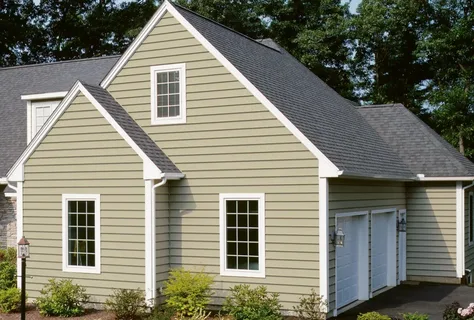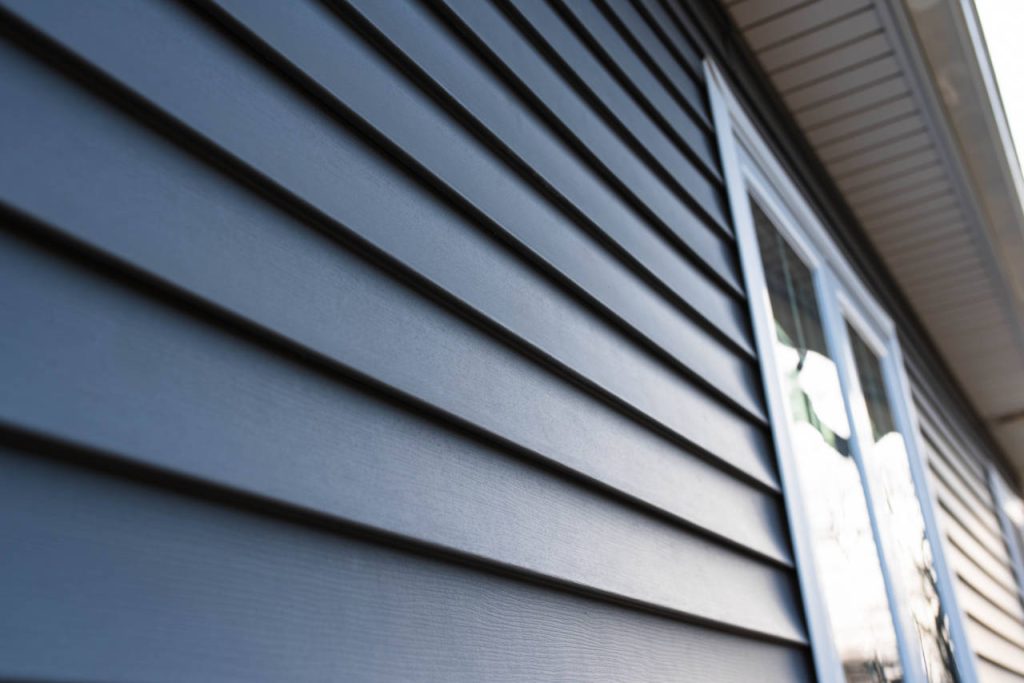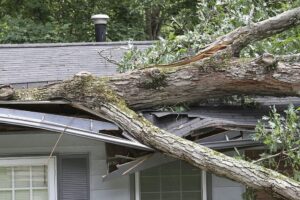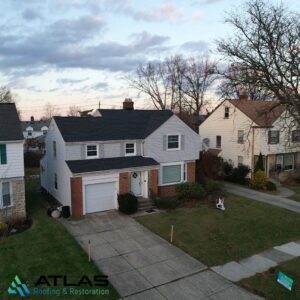Vinyl siding has long been a popular choice for homeowners looking to enhance the appearance of their homes while ensuring durability and low maintenance. However, one question often arises when considering this material: “How long does vinyl siding last?” The answer depends on several factors, including the quality of the siding, installation methods, climate, and maintenance.
This guide will explore vinyl siding’s lifespan, factors influencing its longevity, maintenance tips, and signs it may be time for a replacement.

The Average Lifespan of Vinyl Siding
On average, vinyl siding can last between 20 to 40 years, with premium options sometimes exceeding 50 years. The longevity of your siding depends on factors like the quality of the material, how well it is maintained, and the environmental conditions it faces.
Modern vinyl siding is engineered for durability. Many manufacturers offer warranties ranging from 25 years to lifetime coverage, underscoring the material’s reputation for longevity. However, achieving the higher end of this lifespan range requires proper care and installation.
Factors That Affect the Lifespan of Vinyl Siding
1. Quality of the Material
Vinyl siding comes in various grades, and the quality significantly affects how long it will last. Thicker siding panels (typically measured in mils, or thousandths of an inch) offer better protection against cracking, warping, and other damage caused by environmental factors.
- Economy Grade: 20-30 mils thick; may last up to 20 years.
- Standard Grade: 40 mils thick; lasts 30+ years.
- Premium Grade: 50+ mils thick; can last 40-50 years.
2. Installation Techniques
Proper installation is crucial for ensuring the longevity of vinyl siding. Incorrectly installed siding can lead to moisture buildup, warping, or gaps that let in pests. For optimal results, hire a professional installer familiar with the product and your home’s structure.
3. Environmental Conditions
Extreme weather conditions can reduce the lifespan of vinyl siding. Prolonged exposure to direct sunlight can cause fading and brittleness, especially in warmer climates. Conversely, cold weather can make vinyl brittle and more susceptible to cracking.
4. Maintenance
One of the most significant advantages of vinyl siding is its low maintenance requirements. That said, regular cleaning and inspections can go a long way in extending its lifespan. Neglecting basic upkeep can lead to mold, mildew, or structural issues that compromise the siding’s durability.
Maintenance Tips to Maximize the Lifespan of Vinyl Siding
1. Regular Cleaning
Dirt, pollen, and other debris can accumulate on your siding, leading to discoloration and potential mold growth. Cleaning the siding at least once a year with a garden hose and mild detergent will help maintain its appearance and structural integrity.
2. Inspect for Damage
Conduct regular inspections, especially after severe weather, to check for cracks, warping, or loose panels. Promptly addressing minor issues can prevent them from escalating into costly repairs.
3. Protect Against Moisture
Ensure gutters and downspouts direct water away from your siding to avoid moisture buildup. Moisture trapped behind the siding can lead to mold growth and structural damage.
4. Repaint When Necessary
While most vinyl siding comes pre-colored and doesn’t require painting, repainting can extend its lifespan if the color fades or the surface wears out over time. Use paint specifically formulated for vinyl surfaces to ensure durability.
5. Trim Overhanging Branches
Branches and shrubs that scrape against the siding can cause scratches or cracks. Keeping trees and bushes trimmed will help protect the material.
Signs That Your Vinyl Siding Needs Replacement
Even with proper care, vinyl siding won’t last forever. Here are some indicators that it’s time for a replacement:
1. Visible Cracks or Holes
Cracks and holes can compromise the siding’s ability to protect your home from the elements. If repairs become frequent, it may be more cost-effective to replace the siding altogether.
2. Warping or Buckling
Warping or buckling panels often result from improper installation or prolonged exposure to extreme temperatures. If the damage is widespread, replacement might be necessary.
3. Persistent Mold or Mildew
If mold and mildew continue to reappear despite thorough cleaning, it may indicate that water has penetrated behind the siding. This can lead to severe structural damage if not addressed.
4. Fading Colors
Fading can diminish your home’s curb appeal. While repainting is an option, excessive fading may also signal that the siding material has aged and is nearing the end of its lifespan.
5. Increased Energy Bills
Old or damaged siding can lead to poor insulation, causing heating and cooling systems to work harder. If you notice an unexplained spike in energy costs, your siding could be the culprit.
Comparing Vinyl Siding to Other Materials
Understanding how vinyl siding stacks up against alternative materials can help you make an informed decision about its longevity and value.
1. Wood Siding
- Lifespan: 20-40 years with proper maintenance.
- Maintenance: Requires frequent painting, staining, and sealing.
- Cost: Higher upfront and maintenance costs than vinyl.
2. Fiber Cement Siding
- Lifespan: 30-50 years.
- Maintenance: Needs periodic repainting but resists rot and insects.
- Cost: More expensive than vinyl but offers excellent durability.
3. Aluminum Siding
- Lifespan: 20-50 years.
- Maintenance: Requires repainting and is prone to dents.
- Cost: Similar to vinyl but less energy-efficient.
Vinyl siding strikes a balance between affordability, low maintenance, and durability, making it a top choice for many homeowners.
The Environmental Impact of Vinyl Siding
Vinyl siding is made primarily from PVC (polyvinyl chloride), which has raised concerns about its environmental impact. However, advancements in manufacturing have led to eco-friendlier practices, including recycling old siding into new products. Opting for high-quality, durable vinyl siding can minimize waste and reduce the need for frequent replacements.
Warranties and Guarantees
Many manufacturers provide warranties ranging from 25 years to lifetime coverage. These warranties often cover issues like fading, cracking, and manufacturing defects. When purchasing vinyl siding, review the warranty terms to understand what is covered and ensure proper installation to maintain the warranty’s validity.
Conclusion: Is Vinyl Siding Worth It?
Vinyl siding is a durable, cost-effective, and aesthetically pleasing option for homeowners. With an average lifespan of 20-40 years—and the potential to last even longer with proper care—it’s a reliable investment for protecting and enhancing your home.

By choosing high-quality materials, ensuring professional installation, and performing regular maintenance, you can maximize the lifespan of your vinyl siding. Additionally, recognizing the signs of wear and tear can help you address issues early, avoiding more significant problems down the line.
Whether you’re replacing old siding or building a new home, vinyl siding offers an excellent combination of longevity, style, and value. With the proper care and attention, it can keep your home looking beautiful and well-protected for decades to come.




